Overcast, foggy and cool: a typical, late September day in Germany; but perfect for bike riding. Determined to bike along the Mittelrhein Wine Region this year, I could only hope for the happy coincidence of a break in the rain, and some free time. At least the rain held off, in spite of the leaden clouds overhead.
While I couldn’t pick the weather, I could pick the route. Having once taken a day cruise through the world heritage site of the Upper Middle Rhine, I decided to bike through the area for a closer look. It was a perfect choice as the Rhine Cycle Route stays on the left bank of the Rhine throughout this entire stretch. I narrowed it down even further. By starting at the edge of Boppard, near the vineyards, and ending in Bingen, I managed pass through or see two wine regions: the Mittelrhein, and the Rheingau on the opposite bank; and visit the best-known wine villages and river towns along the Upper Middle Rhine.
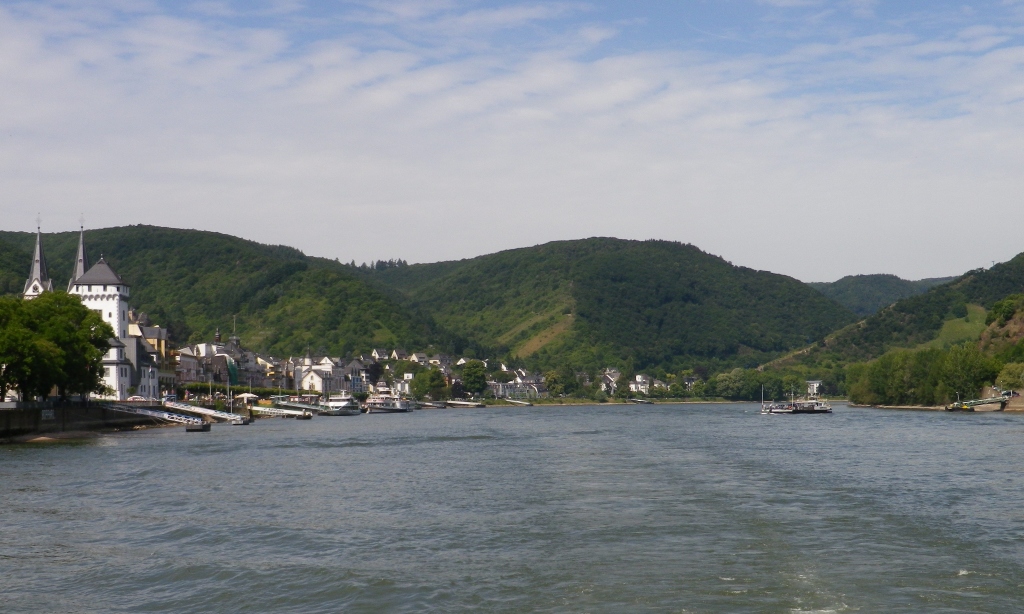
Boppard is famous as both a river port and wine district. The picturesque town itself is famous as a way station – from Roman times to medieval times, and today, as a port of call for the river cruise lines and the scheduled lines that ply the river. Once the Romans retreated from the other side of the Rhine, this little way station developed the Kastell, a fort housing 500-600 men. The twin-spired church in the center of town shelters the remnants of Roman baths. Sporting tourists may take the chairlift at town’s edge to the top of its vine-covered ridge to visit the Bopparder Hamm, one of the best-known vineyards on the Upper Mittelrhein’s left bank. Several hiking paths and circuits wind up and down the ridge and through the vineyard.
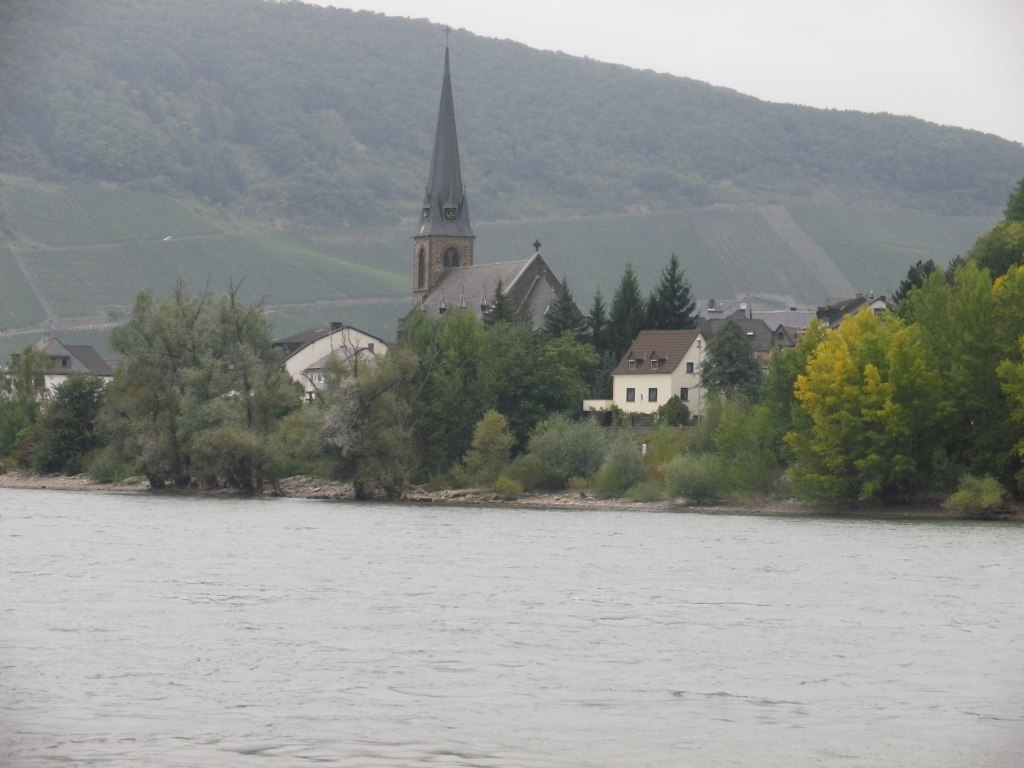
The trail out of Boppard follows a beautiful path along the river, away from crowds and cars. Once back on the main road outside of town, it picks up again on a roadside bike path. River, ships and castles were constant companions on this 17 kilometer stretch to Sankt Goar.
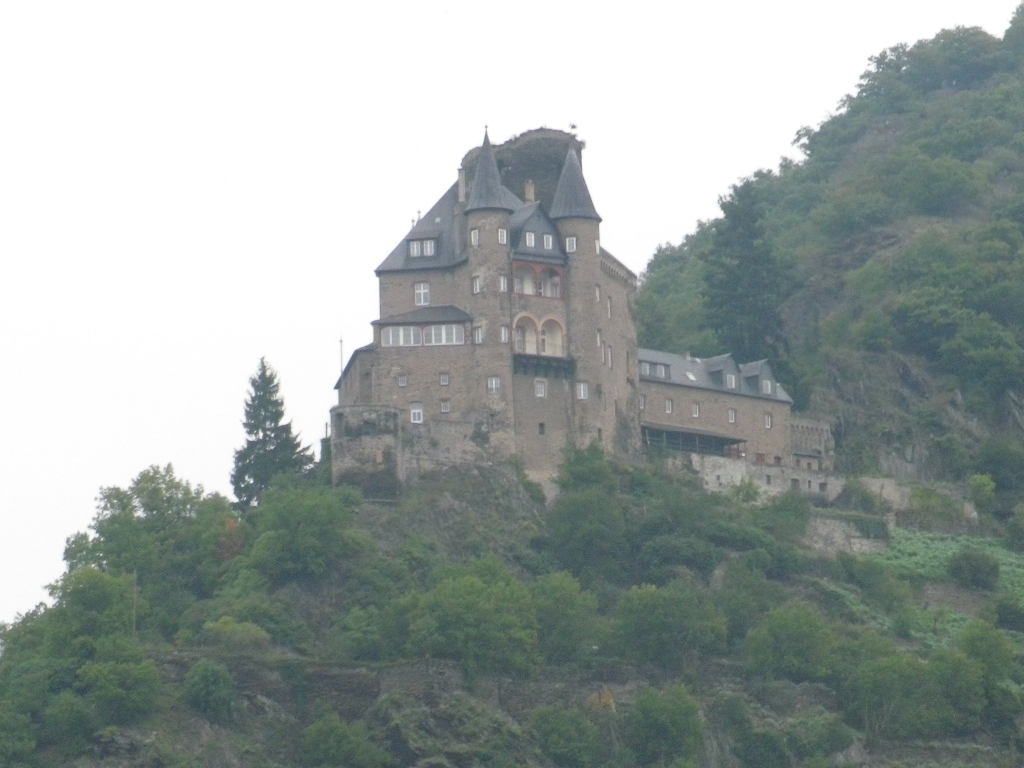
While Sankt Goar is not a wine-producing town, it is a famous river town. The lords of the impressive castle above controlled river traffic, for a fee. Now partly in ruins, is best visited via a walking path from the lower town.
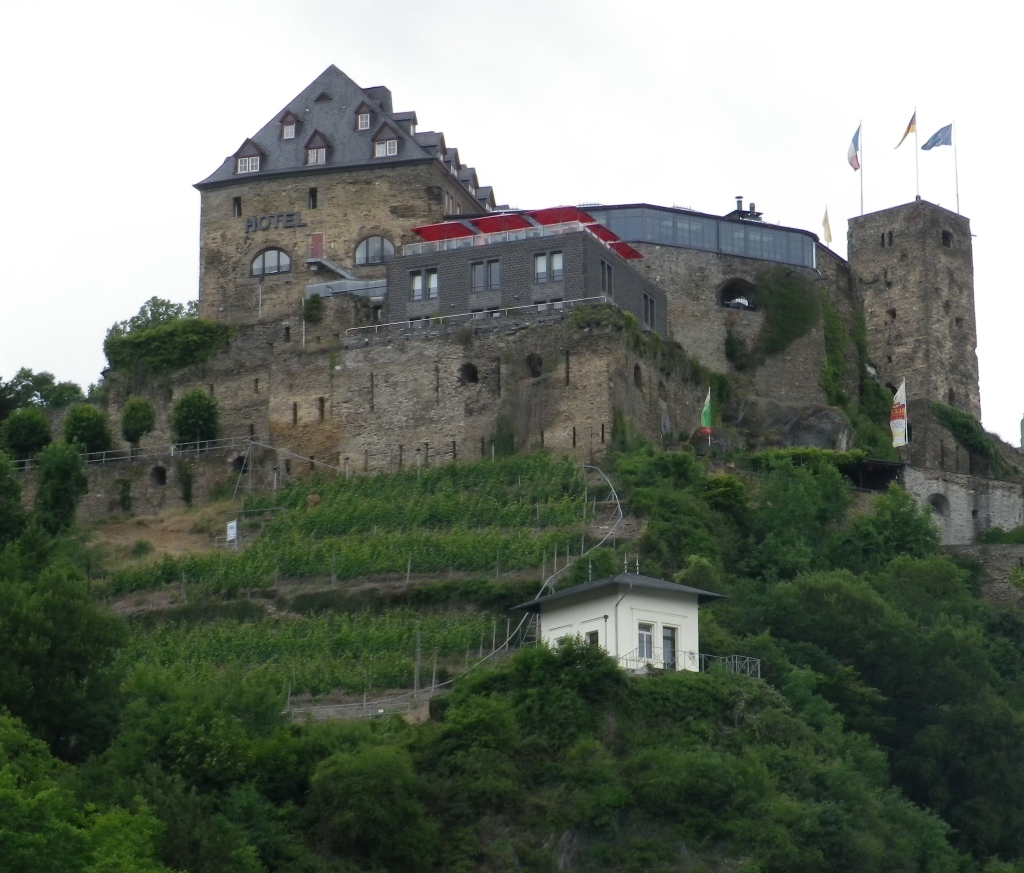
Just on the other side of town, the bike trail narrows onto a sidewalk for a couple of miles before passing the famous Lorelei Rock. Topped by flags, this unyielding, massive rock bends the river, inspiring many German poets, and at least one composer. Passing tourist ships often play an iconic song by poet Heinrich Heine and musician Friedrich Silcher. Seeing it from the shore this time, I realized the danger to ships lies not so much from the protruding cliff face, but from sheets of dark slate jutting from the river’s edge just below the bike path, often hidden just below the roiling waters. Ironic to think that the slate that provides the delicious minerality to the best Rieslings, is dreaded by mariners.
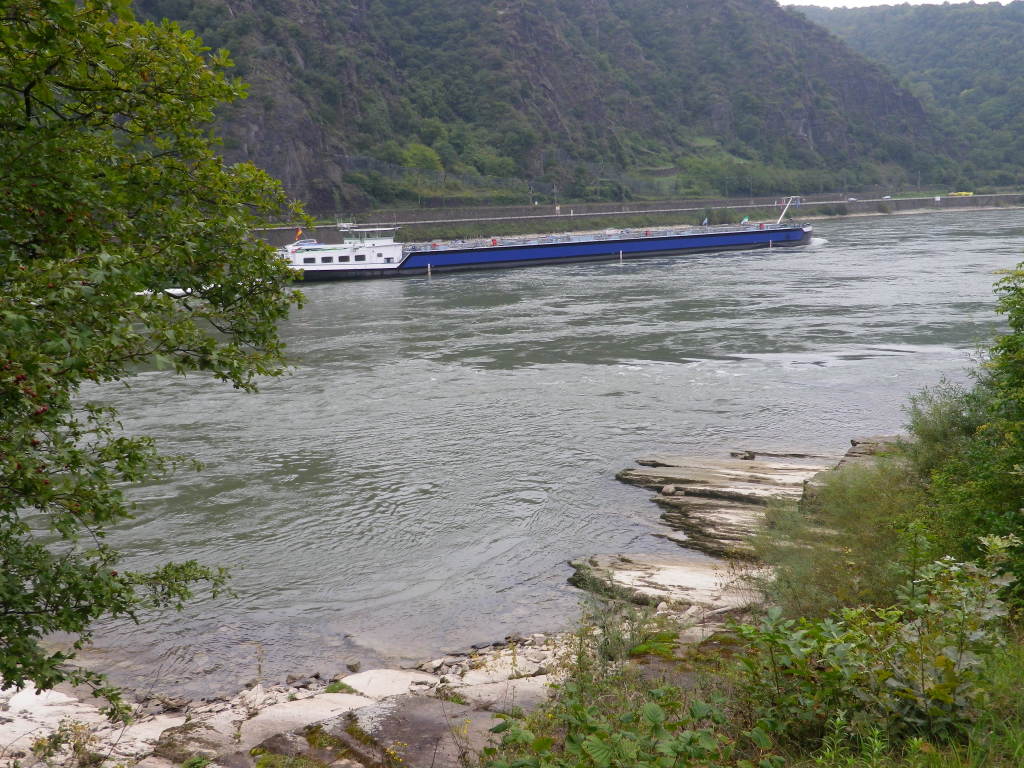
The Rhine is not particularly wide in many places. Here, it is extremely narrow, and the current picks up speed as it rushes through this narrow opening. Modern barges make slower-than-bike-speed upriver. While I saw a couple of pleasure craft on other sections of the river, none were here. It wasn’t until after the river widened, near the walled town of Oberwesel, that I saw a small motorboat.
Outside Bacharach, a long narrow sandbar anchored by trees just a few dozen yards offshore provided a sheltered spot for kayaks and rowboats to take to the water. A small beach on the town side attracted several fishermen. Of all the places along the Rhine, this would be the perfect place to test the Rhine waters, so to speak. But that would have to wait for warmer days for me.
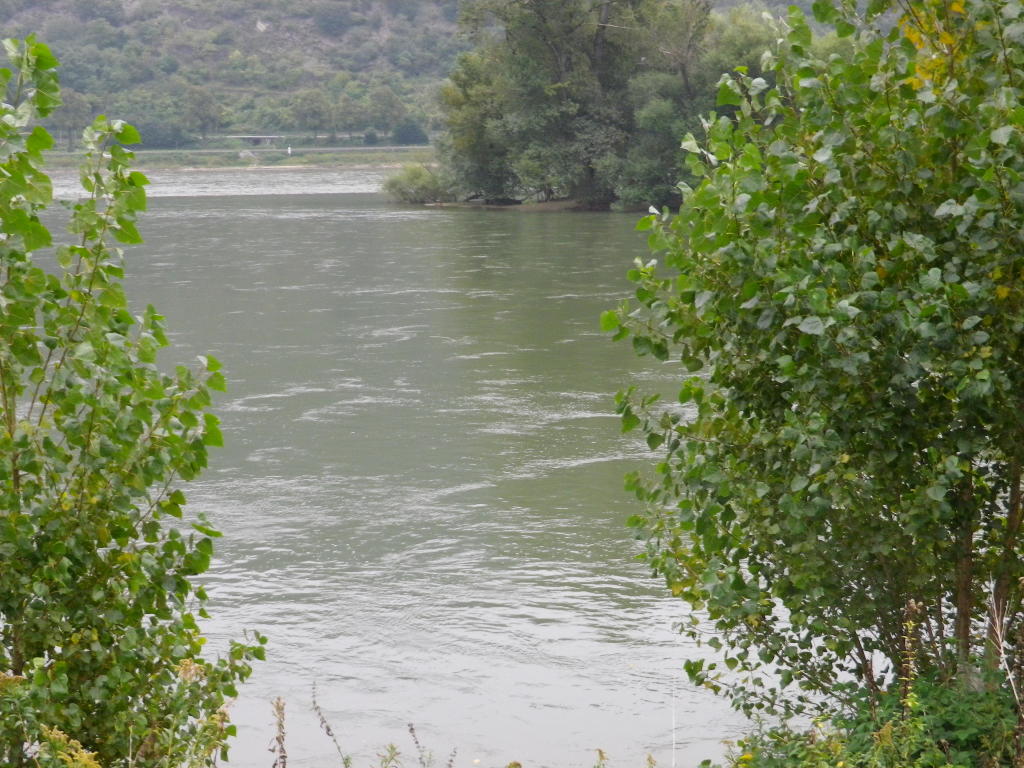
Bacharach is famous for two vineyards: the Hahn and the Wolfshoehle. Wine shops in the picturesque walled town offer both, and I took the opportunity to buy one of each. Previous experiences in Europe have taught me that local wine might not be available out of the area; and Bacharach is close to the southernmost edge of the Mittelrhein wine region.
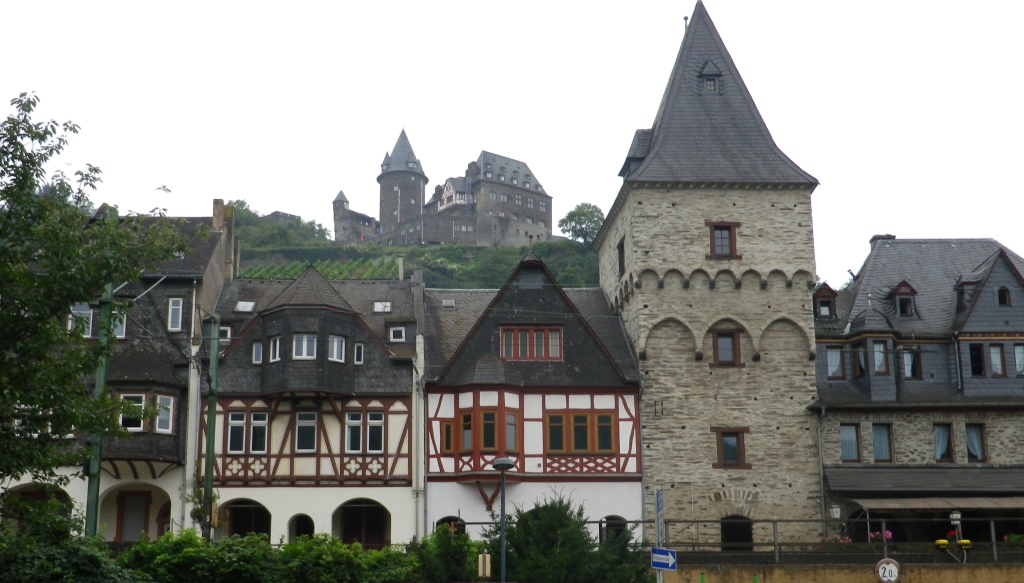
Coasting along Bacharach’s beautiful, waterfront park to the outskirts of town, the trail diverged from the main road, and followed right along the shoreline; so close in fact, that it might be flooded in times of significant rain. This delightful path had a beautiful surface, with lots of greenery lining the sides, and best of all, it continued all the way to Bingen. Looking across the river, much wider here, lay the Rheingau wine region vineyards. With nothing but the sound of waves and the occasional train, I enjoyed this part of the trail the best.
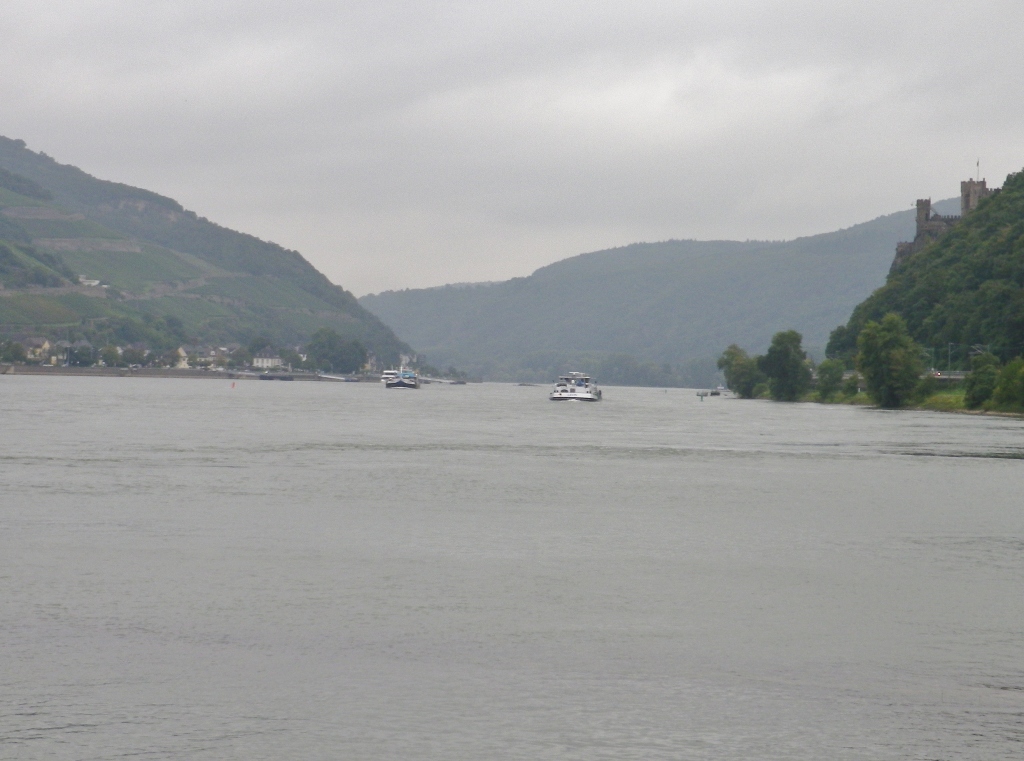
Just before Bingen, one more treat to experience: the castle of Rheinstein. A restored ruin with a long and fascinating history, this castle is open to anyone willing to climb up to it. (My favorite memory from a previous trip is lunching with my friend Liz on the castle’s terrace high above the Rhine, enjoying the good food and great wines (some of the castle’s own), and of course, the long views upriver.)
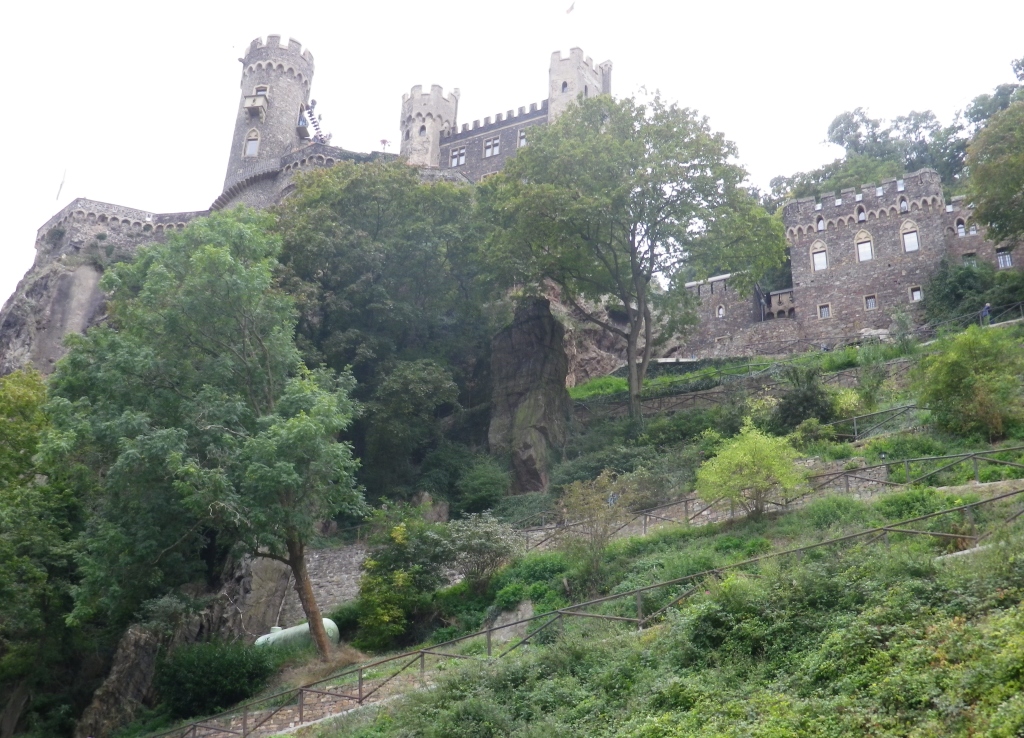
Shortly afterward, I cycled past the infamous Mouse Tower of Bingen and the spires of Bingen came into view. Finally, crossing the Nahe River, the beginning of yet another wine region, I reached the end of this delightful Upper Mittelrhein bike ride.
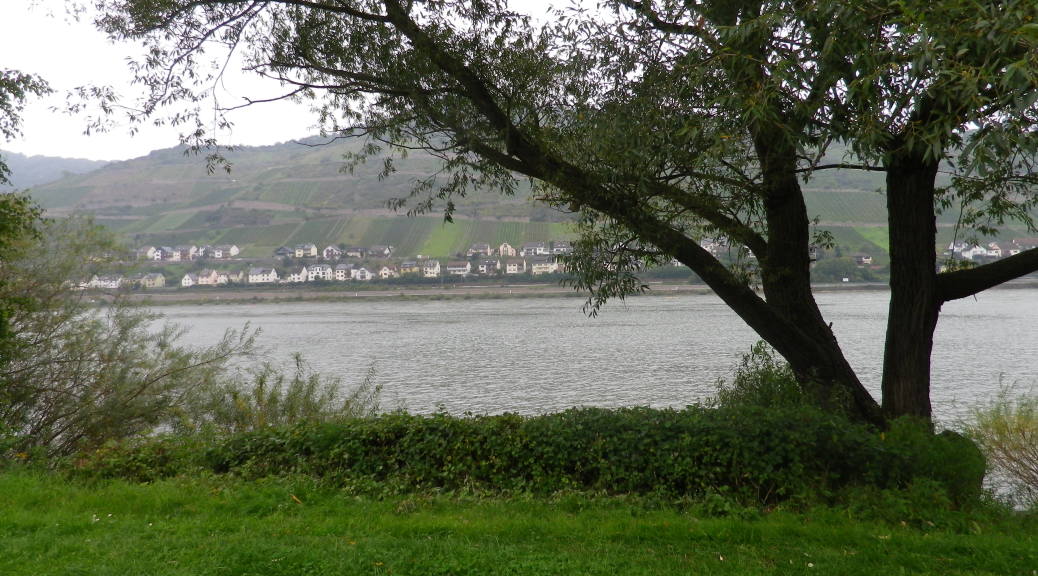
One thought on “Riding Along the Rhine”
Comments are closed.